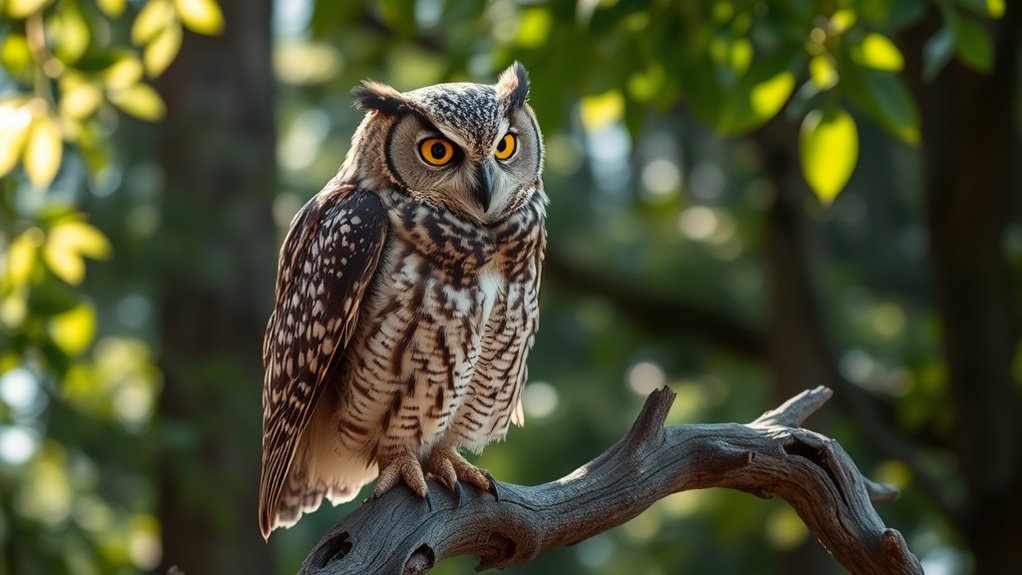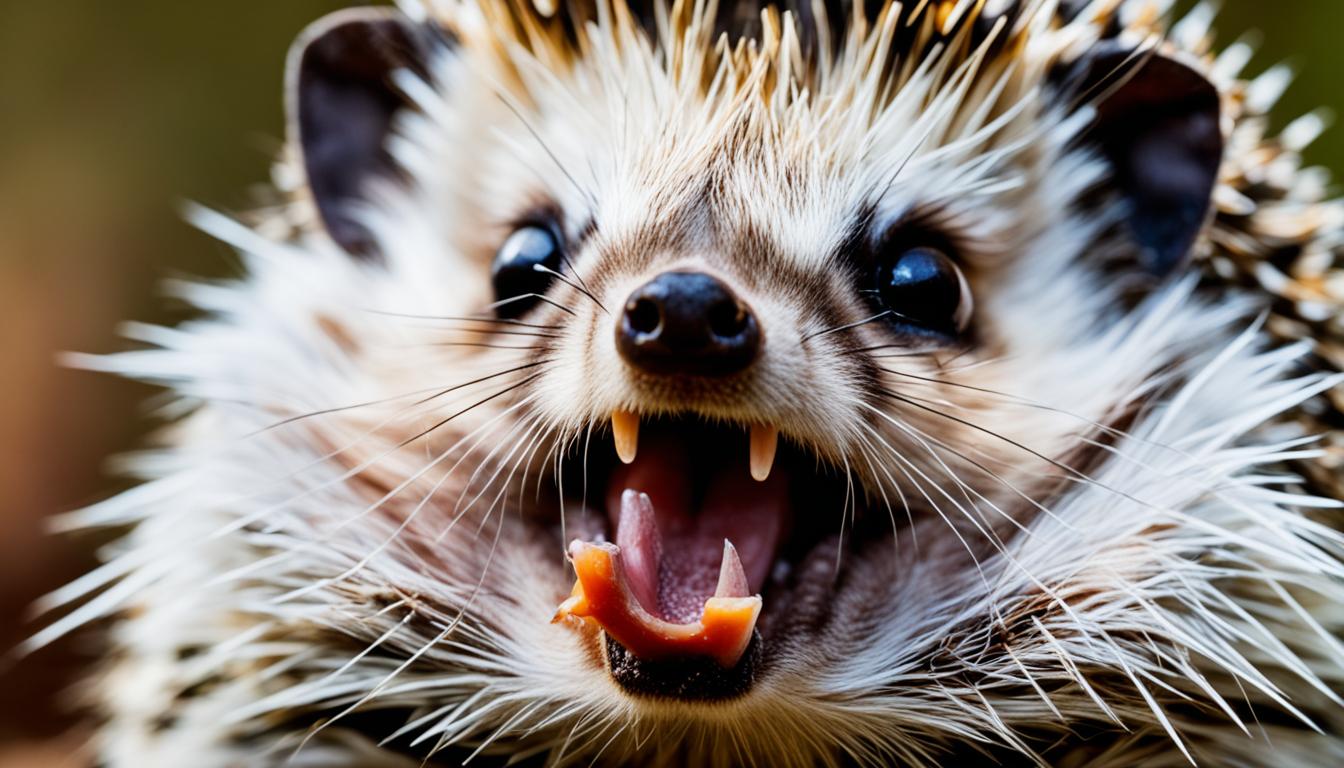Yes, owls can rotate their heads nearly 270 degrees! This remarkable ability lets them scan their surroundings without moving their bodies, which is vital for hunting. Unlike humans, owls have about 14 vertebrae in their necks, providing exceptional flexibility. Their large, fixed eyes also play a role; since they can’t move their eyes, head rotation compensates for that limitation, enhancing their nocturnal vision. Want to learn more about how this unique adaptation aids their hunting skills?
Key Takeaways
- Owls can turn their heads nearly 270 degrees, allowing for extensive scanning of their surroundings.
- Their neck anatomy includes about 14 vertebrae, providing a greater range of motion than humans.
- Fixed eye sockets require head rotation to compensate for their inability to move their eyes.
- Head-turning is crucial for their hunting strategy, enabling stealthy observation of prey.
- The combination of head rotation and acute hearing enhances their predatory skills in low-light conditions.

Have you ever noticed how owls seem to turn their heads almost 270 degrees? It’s a fascinating feature that leaves many people wondering about the mechanics behind it. Unlike humans, who can only rotate their heads a limited amount, owls have adapted their anatomy to excel in their nocturnal hunting. This remarkable ability gives them a distinct advantage in the wild, allowing them to spot prey without moving their bodies.
Owls can turn their heads nearly 270 degrees, a unique adaptation for spotting prey without moving their bodies.
Owls have unique eye anatomy that contributes to their exceptional vision and hunting prowess. Their eyes are large and fixed in their sockets, meaning they can’t move them like we can. Instead, they rely on their flexible necks to scan their surroundings. With a neck that can twist and turn so dramatically, you might think their range of motion would be limited, but that’s not the case. An owl’s neck contains extra vertebrae—about 14 compared to our seven—which allows for the impressive rotation. This adaptation is vital for spotting movement in the dark, making them effective hunters during the night.
When owls hunt, they rely heavily on their acute sense of hearing and their ability to see in low light. The structure of their eyes, along with their head-turning capability, supports their nocturnal lifestyle. As they scan the environment for potential prey, they can quickly pivot their heads to focus on sounds or movements, ensuring they don’t miss a single opportunity. It’s not just about turning their heads; it’s about maximizing their hunting efficiency. The bond between owls and their hunting strategy illustrates how adaptation plays a crucial role in survival.
You might also find it interesting that owls have a special feature in their ears that allows them to pinpoint the exact location of sounds. This, combined with their head rotation, creates a powerful hunting tool. As they listen for the rustle of a mouse or the flutter of a bird, they can quickly adjust their gaze, locking onto their target without needing to move their entire body. This stealth is what makes them some of nature’s most skilled predators.
Frequently Asked Questions
Do Owls Have Good Night Vision?
Yes, owls have excellent night vision. Their owl eyesight is specially adapted for low-light conditions, allowing them to spot prey during nocturnal hunting. With large eyes and a high number of rod cells, they can detect even the slightest movement in the dark. Their eyes are also positioned for depth perception, giving them an edge in locating food. So, when you see an owl at night, you’re witnessing a master of the dark!
What Do Owls Eat in the Wild?
Owls eat a variety of prey in the wild, showcasing their diet diversity. You’ll find them hunting small mammals like mice and voles, but they also enjoy birds, insects, and even reptiles. Their excellent night vision helps them spot prey in the dark, making owl hunting incredibly effective. So, if you’re observing these nocturnal predators, keep an eye out for their diverse meals, as they play a vital role in their ecosystem.
How Long Do Owls Typically Live?
Owls typically live between 5 to 15 years, depending on the species. In the wild, their lifespan can be shorter due to predators and environmental factors, while in captivity, they often enjoy greater longevity, sometimes reaching over 20 years. Factors like diet, habitat, and health play a big role in owl longevity. If you’re fascinated by these birds, learning about their lifespans can deepen your appreciation for their lives in the wild.
Are Owls Solitary or Social Animals?
Owls are mostly solitary creatures, but you might stumble upon some interesting owl group dynamics during mating season. Their social behavior can surprise you! While they prefer hunting alone, certain species do gather in small groups, especially when food is abundant. You’ll notice that these gatherings allow them to communicate and bond, showcasing a unique side to their nature. So, while they enjoy their alone time, they can also embrace social moments!
How Do Owls Communicate With Each Other?
Owls communicate with each other primarily through vocalizations. You’ll hear a variety of hoots, screeches, and calls that convey different messages, from marking territory to attracting mates. Their feather color variations can also play a role; lighter-colored owls might be more visible in certain environments, influencing how they signal to one another. By understanding these sounds and visual cues, you can appreciate the complex social interactions among these fascinating birds.
Conclusion
In conclusion, while owls can’t turn their heads all the way around, they can rotate them an impressive 270 degrees! This incredible flexibility allows them to keep a watchful eye on their surroundings without moving their bodies. So next time you spot an owl, remember that it can see almost everything around it without a single flap of its wings. Isn’t nature fascinating? You can appreciate how these remarkable creatures adapt to their environment in such unique ways!









